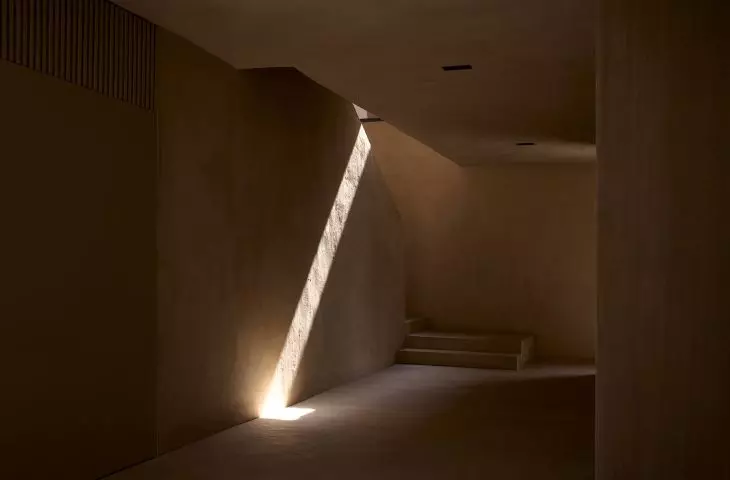DeRoché Strohmayer
The 18th Venice Architecture Biennale 's "The Laboratory of the Future" focused in large part on Africa and architects and architects from there. Part of Ghanaian curator Lesley Lokko 's "Guest from the Future" project was the {tag:Laboratory} studio, which has now unveiled its realization of the artist residency dot ateliers | Ogbojo in Ghana's capital Accra.
The realization by Ghanaian architects of the DeRoché Strohmayer studio
Photo: Julien Lanoo | © DeRoché Strohmayer
Ateliers artist residency program in Africa
Among the artist residencies emerging in West African countries, dot.ateliers | Ogbojo in Accra stands out for its focus on rest and reflection. Located on the outskirts of the city, this oasis has incorporated spaces for artists to collaborate with nature. As a result, the space offers a holistic approach to creativity. Initiated by artist Amoako Boafo, the residency aims to be a place where invited intellectuals and artists can live together and indulge in rest and creative reflection during the program.
The residency will house writers, curators and filmmakers invited by dot ateliers
Photo: Julien Lanoo | © DeRoché Strohmayer
Accra artist residency from urban wasteland
The designers of {tag:pracownie} subjected an existing development in a dynamic urban context to a reuse and created a building full of spaces at heterogeneous scales. As a result, different levels of privacy between rooms were achieved. The architectural expression of dot.ateliers | Ogbojo balances the institutional and "domestic" aspects of the project through strategic building placement, lush green corners and refined finishes. A number of ancillary buildings were added to the existing structure to fully meet the programmatic needs of the residence. The old and new structures have been linked by lush gardens and a roof to protect from the hot tropical sun. The covered courtyard is a gathering place for residents and their guests to immerse themselves in fruitful discussion during large communal dinners.
The designers were part of the 18th Venice Architecture Biennale
Photo: Julien Lanoo | © DeRoché Strohmayer
frames for Ghana
The interiors have been designed to flow seamlessly between them. Each room on the first floor overlooks a different part of the landscape - a "picture window" - surrounding the main building. The user thus maintains constant contact with the changing nature as he moves inside the building. The existing two-story structure has been adapted and remodeled into a living room, library, gym and kitchen (on the first floor) and rooms with bathrooms (on the second floor).Skylights also frame the sky above the residence, which permeates the spaces inside and outside the building in various locations and depths. The windows and skylights generously let in light without direct heat gain.
The building's structure lets natural light flow in while not generating unnecessary heat gain
Photo: Julien Lanoo | © DeRoché Strohmayer
reuse architecture solutions
The structure incorporates a number of passive building solutions that minimize heat gain, collect rainwater and use solar energy for water heating and interior lighting. Anew canopy on the outer edges of the main building contributes to maintaining moderate temperatures inside. The canopy not only marks a path between different parts of the complex, but also acts as a light moderator, blocking direct heat gain from the sun in the extensive glazed rooms on the first floor. Framing the landscape, the windows are set deep into the walls, further reducing heat gain. They also allow drafts, thereby reducing energy consumption for air conditioning.
A plan for the adaptation of the existing building for the artist residency dot ateliers
© DeRoché Strohmayer
Locally produced, low-carbon concrete was used to cast all the new concrete elements. The walls were finished with rough clay plaster, a reference to the artisanal building traditions in Ghana. The interior wall cladding was clad in locally sourced walnut wood, highlighting the harmonious nature of the space and the holistic ideas of sustainability and beauty that guided the design.
Unfolded axonometry
© DeRoché Strohmayer
Ania Kociucka
[based on the studio's author description].








































































